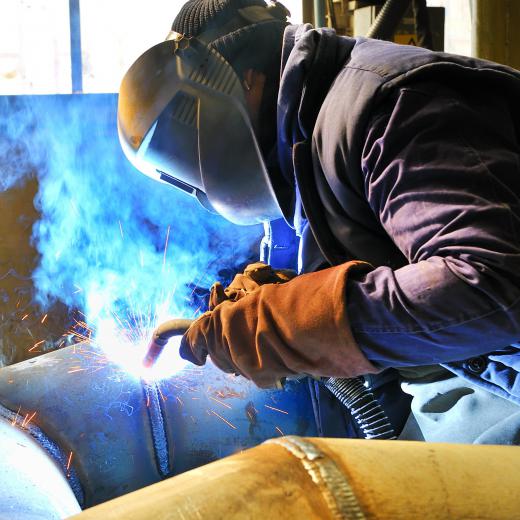Fusing is a joining process that is used in industrial applications, in manufacturing processes, and in hobby use. Manufacturers frequently use fusion to meld glass, metal, and plastics. Several fusion methods are used, such as laser, kilns, and electric arc. One example of fusing is a porcelain-fused-to-metal dental crown.
Many different types of metals and metal alloys are suitable for fusion. These include iron products, such as cast iron, steel, and stainless steel. Other metals include magnesium, copper, and brass. Metal fusion has many industrial and manufacturing applications.

Welding is one of the most common methods for fusion. In metalwork, the welding techniques include shield metal arc fusion, tungsten inert gas, and metal inert gas welding, which is also called gas metal arc welding."Sometimes people refer to shield metal arc fusion as stick welding or manual metal arc. Normally manufacturers use it to for iron products, such as cast iron, steel, and stainless steel.
The tungsten inert gas welding, or TIG welding, technique is useful for metals that have lower melting points, such as aluminum. TIG welding is not limited to softer metals and may be used for steels and irons. Other metals used in TIG welding include magnesium, brass, and titanium.
One use for gas metal arc welding, or GMAW, is a technique that fuses aluminum to non-ferrous metals. GMAW has two subtypes: metal inert gas (MIG) welding or metal active gas (MAG) welding. GMAW is the fastest of the three welding methods. For manufacturers, it is the most universal welding process, but it has the limitation that it is safe only in a controlled environment. This fusion method is popular because of its speed, versatility, and ability to adapt to robotic operations.
Another popular use for fusion is glass fusing. Archeologists found evidence of Egyptian artisans using glass fusion as far back as 5,000 years. In modern times, most of the projects involve glass-to-glass fusion, but many people use the technique to combine dissimilar products. Some metals, including aluminum, may not fuse properly, but manufacturers use glass fusion for many other applications, such as in the production of glass-coated electronic components. Glass fusion is accomplished by heating the glass in a kiln.
Another example of heat fusion is using heat and an adhesive to fuse fabrics. In the textile industry, fusion is necessary to stabilize knits, fuse thermoplastic films to fabrics, and create decorative fabrics. Professional garment makers often use fusion while sewing garments and other items that require stabilizers and underlinings. Generally, this process uses heat and pressure.
Many industrial and manufacturing processes involve fusing plastics. This may be plastic-to-plastic fusion or the process of plastic fused to other products, such as metals. Although this usually involves heat-induced fusion, sometimes manufacturing processes use chemical-induced fusion. This includes chemicals that soften the plastics to create the fusion.
Additional power sources for fusion include laser, ultrasound, and friction,. Some typical sources of power include gas flame or electric heaters in kilns and gas or electric welding. Other projects require the heat and pressure combined.
The laser fusing technique is a relatively new one that was developed in Denmark. It is frequently used to repair surfaces or provide coatings on surfaces. It uses the new laser technology to melt fine powders to a damaged surface or to a surface that needs to be sealed. Often people refer to this as cladding.
